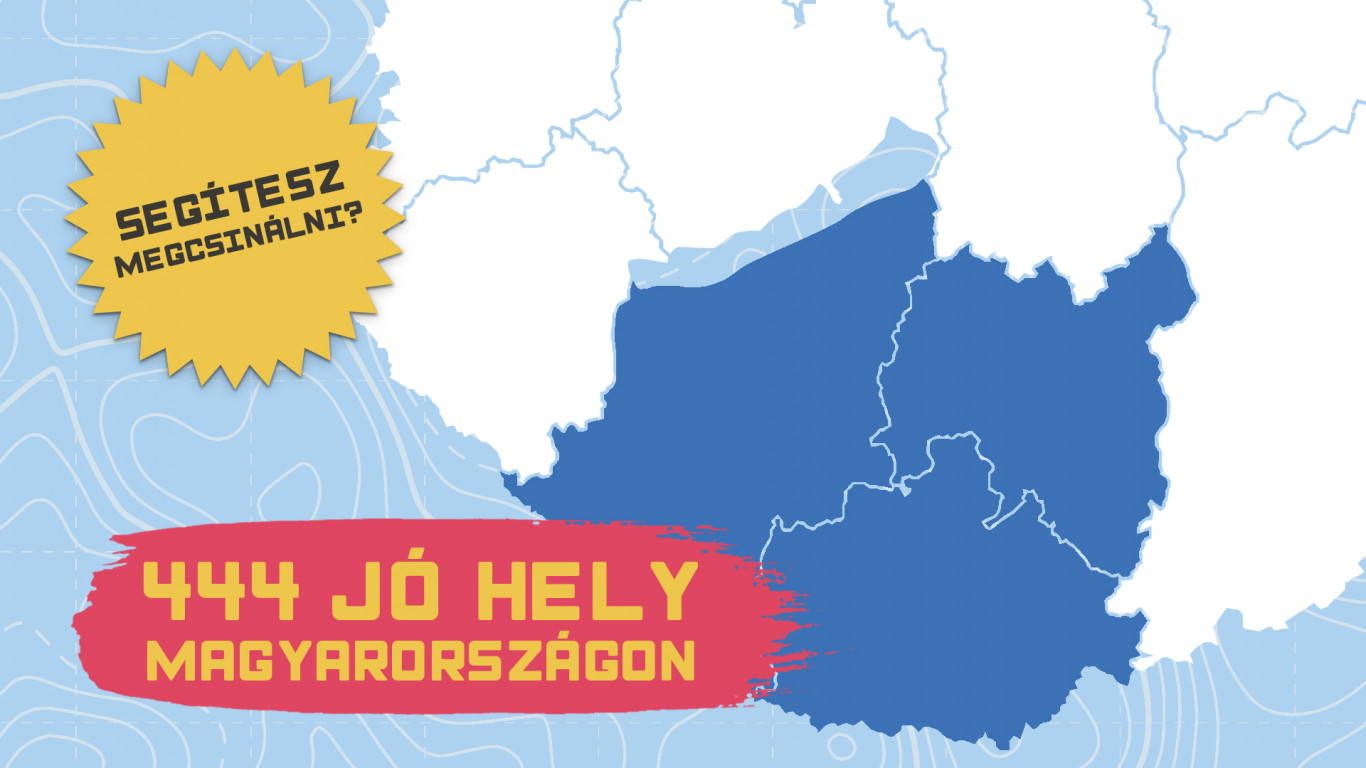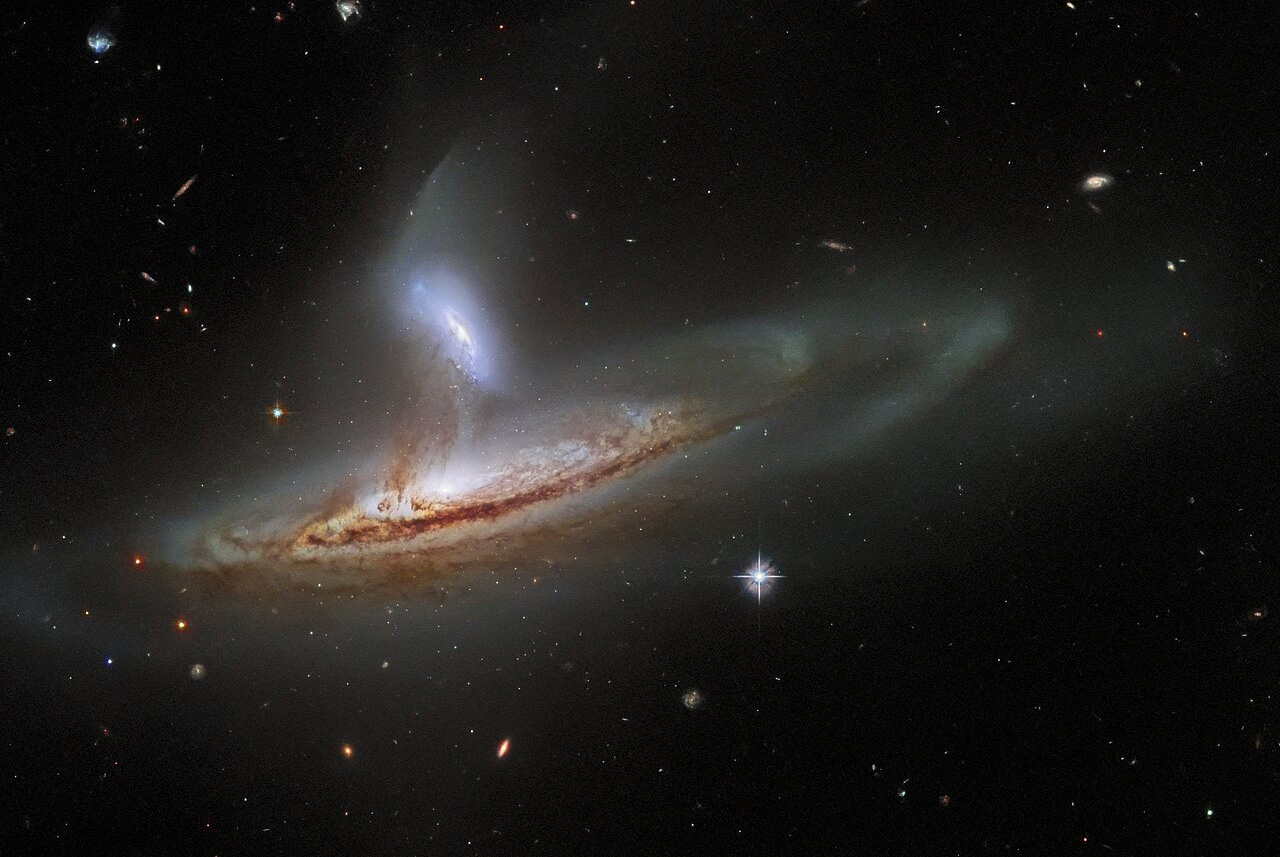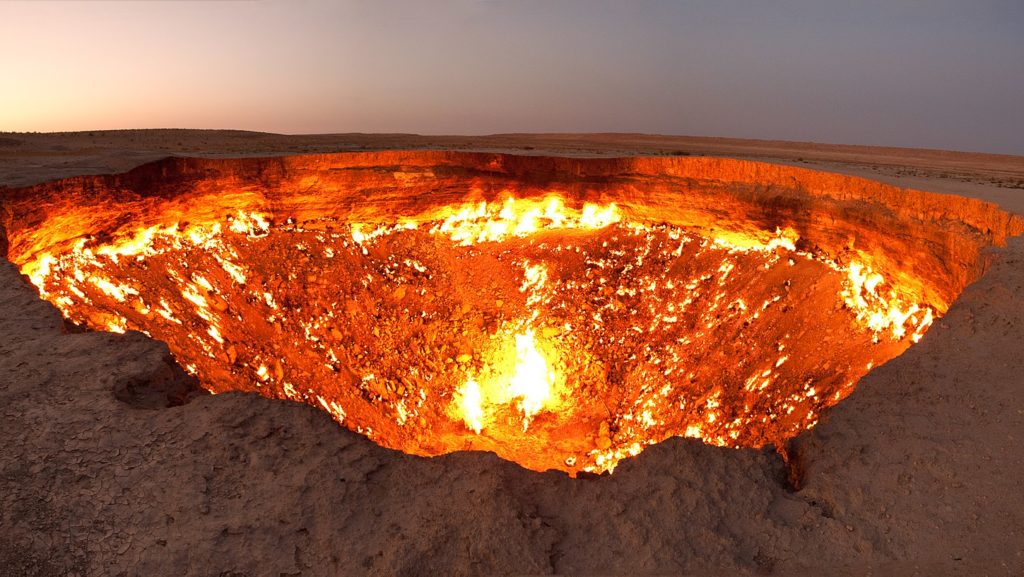She is strangely beautiful and alluring.
Hear about devastating fires every year. They come and destroy, the flames are intense, they spread – but they are fleeting. Now we put different kind of fires in a group. They are smaller and more restricted, but getting out takes a long time.
Humans often generate these fires, usually through mining or excavation activities. Some write burns for decades, others for thousands of years, but they are all strangely beautiful and alluring Atlas Obscura.
Hell Gate – Turkmenistan
In Turkmenistan, in the Karakum desert, near the village of Darvaza of 350 people, there is a pit of 70 meters in diameter that has been burning for more than 40 years.
Although it is technically called the Darvaz gas crater, locals know the hole as the ‘Gate of Hell’. Its fiery glow can be seen for miles.
The Gate of Hell Crater was established in 1971 when a Soviet drilling rig accidentally collided with a huge underground natural gas cave, causing the ground to collapse and the entire platform to collapse. To prevent toxic gas emissions, the geologists decided to ignite the natural gas, hoping that in a few days all the natural gas in the cave would be extinguished, but it is still burning to this day. It is believed that the Soviet rig is still located somewhere on the other side of the “Gate of Hell”.
Despite the name of the crater and the ever-present flames, people often visit the desert to witness the site in its full blazing glory.
Yanar Dag (Mountain of Fire) – Baku, Azerbaijan
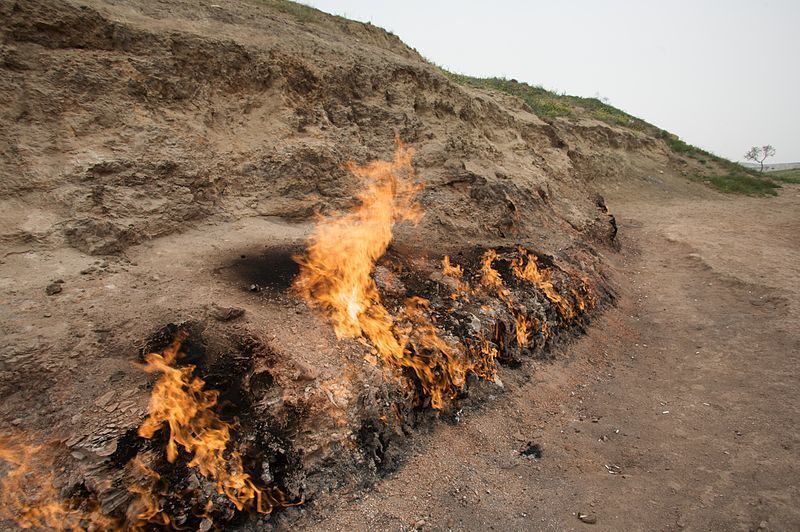
In the thirteenth century, when Marco Polo visited the then Persian city of Baku, he mentioned a number of mysterious flames found in various places on the Absheron Peninsula. These fires called Azerbaijan “Land of Fire”. Five centuries after Marco Polo, the French writer Alexandre Dumas witnessed the natural flames of a mysterious fire church.
It is easy to understand how these natural flames dazzled and frightened people in ancient times, so it is not surprising that natural fires in Azerbaijan played an important role in the creation of Zoroastrianism.
The natural flame of Azerbaijan can be attributed to its huge gas reserves. When these reserves began to be tapped, many natural fires were burned due to the low pressure underground. Of the rest, Yanar Dag is arguably the most impressive one.
The 10m long never-sleeping firewall burns at the edge of the hill and is of course even more exciting at night when tourists and locals watch the fire from a nearby cafe.
Yanartas – Turkey
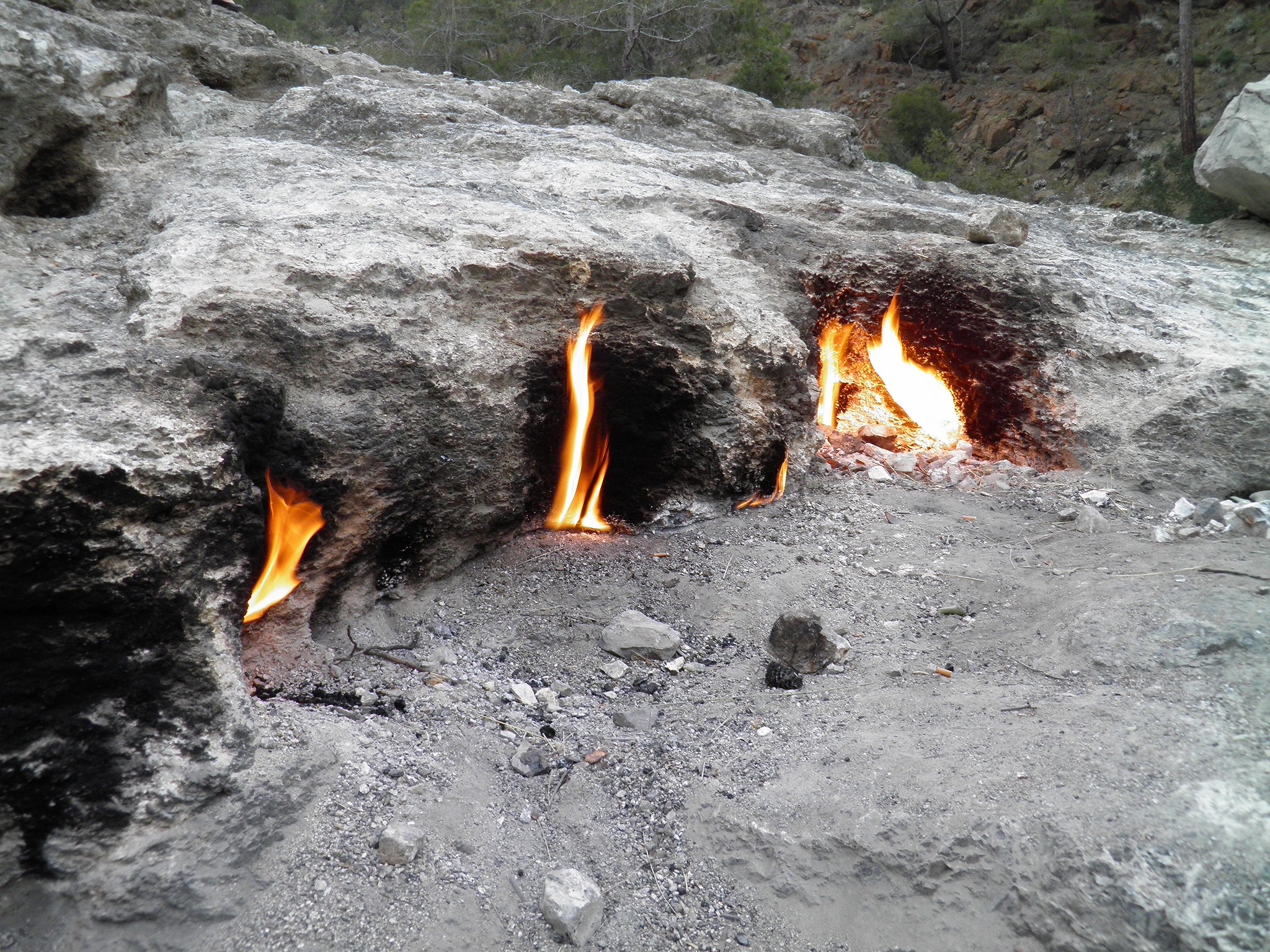
From afar, this mound looks like any other mountain. But it turns out that climbing to the top is no ordinary place.
The flame flashed in the gaps on the side of the mountain. They have been burning for at least 2,500 years. The flame is fed by methane gas leakage through the nozzles. It is said that in the past, sailors used the mountain as a kind of burn mark. Nowadays, hikers make tea or toast marshmallows using standing bonfires.
Eternal Flame Falls – Chestnut Ridge County Park, Orchard Park, New York State
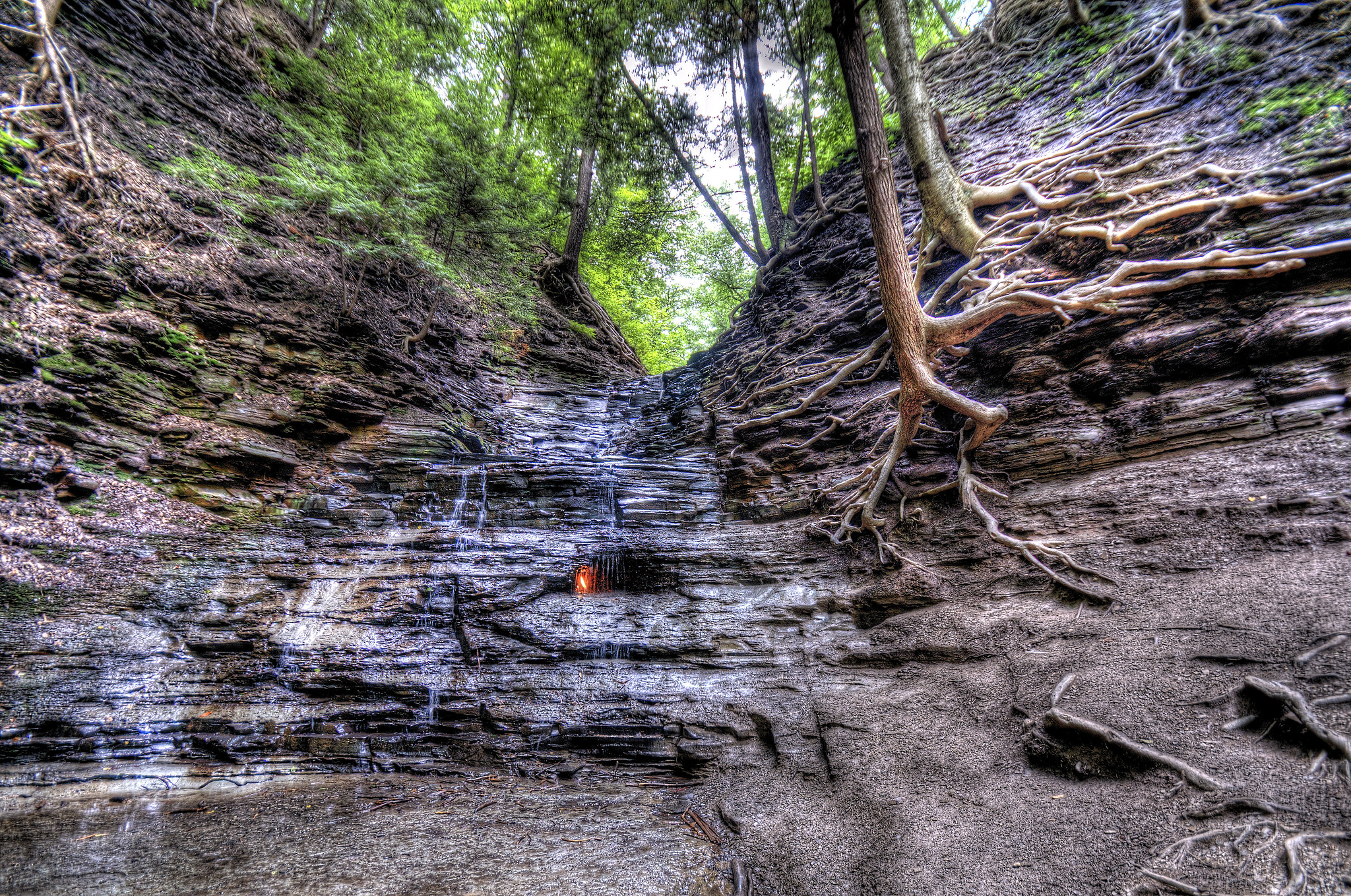
All you need is tall boots and a lighter for anyone who wants to know where the New York State waterfall got its buzzing name. In the middle of the waterfall in Chestnut Ridge County Park is a small flickering flame generated by a pocket of natural gas and hikers passing by the waterfall ignite the pocket of gas over and over as it spills, keeping the flame in constant circulation.
Eternal flame caused by pockets of natural gas is common, but the single flame under the waterfall makes the eternal flame cascade unique.
Smoking Hills – Arctic Ocean, Northwest Canadian Territory
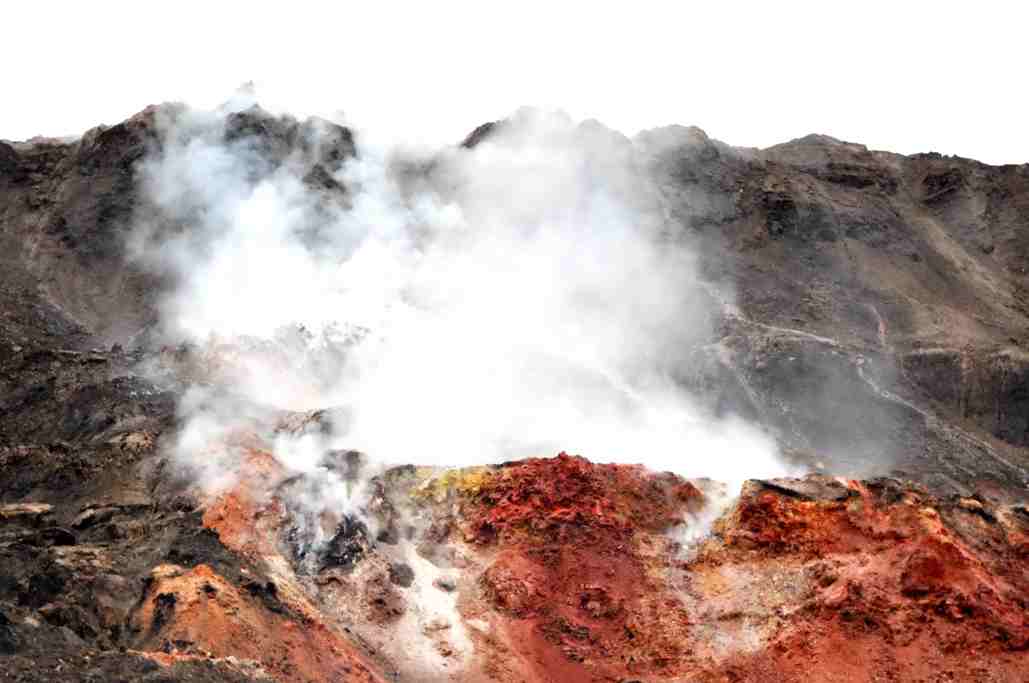
These red-striped rocks had been burning continuously for centuries, aptly named the Smoking Hills, and they certainly provided a shocking sight to early European sailors approaching this strange, far-off landscape.
Irish explorer Robert McClure made the first record of the Burning Hills in the early 19th century. His crew traveled to the Canadian Arctic after the lost explorer Sir John Franklin, who disappeared five years earlier on an expedition to map the Northwest Passage.
Explorers believe that the volcanoes were burning due to volcanic activity, but there is actually another explanation. The underground shale in the area is rich in sulfur and lignite, which causes the rocks to ignite spontaneously as the hillsides erode and the combustible gases are exposed to oxygen.
Over the years, the sulfur dioxide produced during combustion has altered the acidity of the area to such an extent that its ecosystem now differs from that of the surrounding landscape. The dark clay stone is usually fried and bleached with heat, and the rocks are colored with red and orange stripes.
















